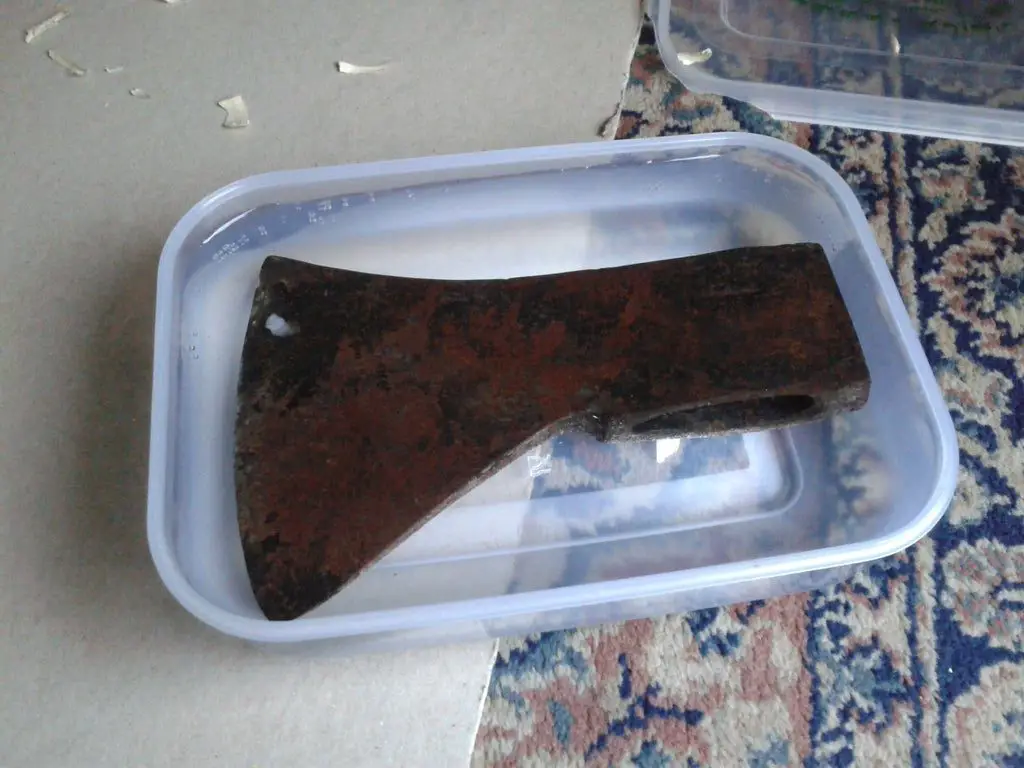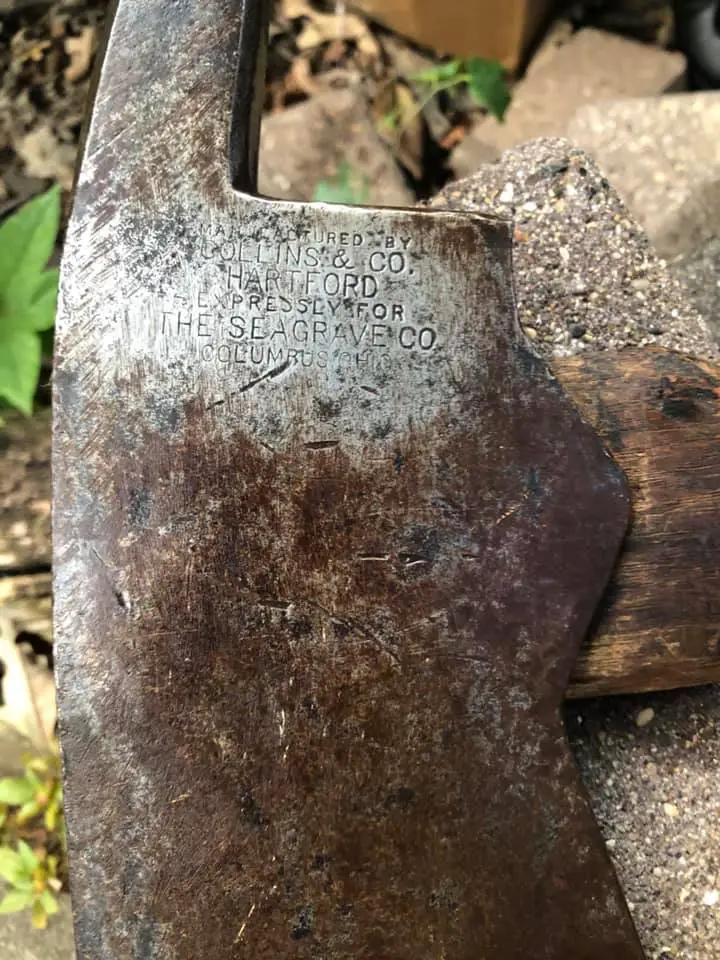To polish an axe head, remove rust with a wire brush, then sand the surface progressively using finer grits of sandpaper (e.g., 400, 800, 1500). For a mirror finish, apply metal polish with a soft cloth, buffing in circular motions until the desired shine is achieved. Clean and protect with oil.
Maintaining your axe will help ensure that it works properly. Most people know that sharpening the axe is important to keep it cutting properly, but regularly polishing the axe head is also an important step in keeping the axe working properly. Polishing an axe head can also restore an old piece of equipment to new glory.
Polishing an axe head has a few steps. You need to remove the rust and burrs first, smooth out the axe, then polish it. While the polishing process is a bit involved, the result is a tool that will be as good as new.
Here is a step-by-step guide to polishing an axe head.
Table of Contents
Equipment Required
Before you can start any work, you need to gather your equipment. Here are some of the basic tools you will need to polish an axe head.
- Table vise. You need this tool to hold the axe in place as you work, freeing your hands to polish it.
- A rotary tool and accessories. The rotary tool is one of the most useful tools you need to polish an axe. You will fit it with several accessories, depending on the step of the polishing process that you’re at. These accessories include flap wheels of different sizes, a buff wheel, and a polishing wheel.
- Polishing compound. This is the material that will actually give your axe its shine.
- Vinegar. This household item is one of the most effective substances for removing rust.
- Gloves and other protective equipment. The materials you are working with could harm your skin, so you want to protect yourself when you can.
How to Polish an Axe Head
Now, let’s get into the step-by-step process of polishing an axe head.
1. Remove Rust and Debris with Vinegar
Before you can start polishing, you have to remove any grit, rust particles, or other debris that will affect the finish of your polish and potentially damage your axe. Vinegar is one of the most effective ways to remove rust and is more affordable than any fancy rust removal sprays you’ll find at the hardware store.
To use vinegar to remove rust, make a vinegar solution with water. Then, leave the axe head in the solution overnight for the best results. Once the axe soaks in vinegar, scrub it with steel wool to remove the rust particles and debris.

2. Remove Any Burrs from the Edge
Burrs are little fragments of steel that form along the edge of sharp objects, such as axe blades. This happens when the axe hasn’t been maintained in a while, and the steel starts to deform. Burrs will affect your axe’s ability to cut properly.
You will remove the burrs with your trusty rotary tool. Fit the rotary tool with an abrasive brush and start going over the blade. This will smooth out the burrs.
3. Remove Scratches With a 400 Grit Flap Disc
Besides burrs and grit, other forms of damage can affect the surface of your axe, such as scratches. Luckily, you can easily remove scratches using sandpaper. While you can sand your axe blade manually, it’s much faster (and safer) to use your rotary tool. Use a 400 grit flap disc, which has very fine sandpaper, and go over the axe blade to remove any scratches.
Some people recommend starting with coarser grains and working your way down, but this method saves you the trouble of switching out your flap disc.

4. Prepare the Surface with a Buff Wheel
Finally, it’s almost time actually to polish your axe blade. There is still one more step of preparing the surface that you must do, which is buffing it. Using a buff wheel attachment on your rotary tool, buff the surface until it is smooth. A good rule of thumb is to use a 280-grit buff wheel for this step, but you can adjust it for your axe.
5. Polish the Steel with a Polishing Wheel
Now it’s time to get the polish out. Take off the buff wheel from your rotary tool and add the felt polishing wheel. Break out the polishing compound and dab a smear onto your rotary tool accessory. Move it across the surface of your axe, buffing in little circles. This will work the polishing compound into the surface of the axe.
Using a rotary tool instead of manually polishing with a felt cloth means that you get the job done faster. The spinning rotary tool is much faster than the motion of your hand, achieving better results. Plus, you protect your fingers from accidentally brushing against the blade.
6. Repeat on the Other Side
When you secure your axe in a vise, you can only work on one side of the blade that is facing up. Once you are done polishing, you need to flip your axe and repeat all the above steps on the other side. You use both sides of the blade, so you need to make sure they receive equal maintenance!
7. Sharpen the Blade
Once your axe is polished, the final step before it is ready to work is to sharpen the blade. Sharpening the blade ensures that you will be more efficient and are less likely to injure yourself because the axe is less likely to stick.
You can use a few different tools to sharpen the blade: a whetstone, river stone, file, or belt sander. Our post gives you a detailed overview of how to sharpen your axe blade using a few different methods.
Final Thoughts
Polishing your axe blade is about more than making sure your tools look nice when they are lined up in your woodshed (although that certainly doesn’t hurt). The process of polishing the blade removes damage such as rust, burrs, and scratches.
Polish also helps the axe work properly for longer and cut better once you sharpen it. To polish an axe, you will need a rotary tool with several different attachments, including a polishing wheel, vinegar, a polishing compound, and plenty of patience.
